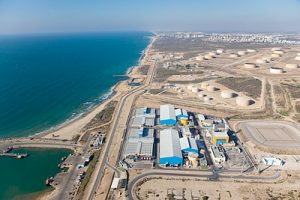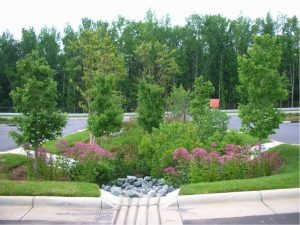
Texas is the largest state in the continental United States, and home to Houston, Dallas, and San Antonio, three of the top ten most populous cities in the nation. The Lone Star State has pioneered many famous firsts and larger than life landmarks, and seems to do things in its own way. In 1870, Texas built the Waco Bridge, the first suspension bridge in the United States that is still in use today as a pedestrian crossing, and the dome of the capitol building in Austin stands seven feet higher than that of the nation’s Capitol in Washington, D.C. The world’s longest fishing pier is in Port Lavaca, the world’s first rodeo was held in Pecos on July 4, 1883, and the Tyler Municipal Rose Garden is the world’s largest rose garden, with over 38,000 rose bushes representing 500 varieties of roses set in a 22-acre garden. Texas has a total of 6,300 square miles of inland lakes and streams, second only to Alaska, and more land is farmed in Texas than in any other state in the nation, including California.

It’s no wonder that Texas is also a national leader in water management. With its massive population, vast farming acres, and generally arid climate, the state has taken proactive measures to ensure that it has adequate water supply for its myriad needs. In 1997, Texas developed its first statewide water plan and has faithfully updated it every five years since then. The statewide plan combines information from 16 regional plans, each with its own 50-year projected water demands as well as strategies for new water supply. Since the population in Texas is expected to increase over 80% by the year 2060, growing from 25.4 million to 46.3 million people, the most recent statewide water plan (completed in 2012) predicts a gap between supply and demand of over eight million acre-feet by 2060, which would require an astronomical $53 billion investment in new water supply strategies. And that $53 billion represents less than a quarter of the total need of $231 billion for water supplies, water treatment and distribution, wastewater treatment and collection, and flood control required for the state of Texas in the next 50 years. As a result of this dismal forecast, Texas voters approved a new $2 billion revolving loan fund in an effort to avoid the insurmountable deficit. The fund provides monetary support for projects in the state water plan, and requires that at least 20% of the funds be used for conservation and reuse strategies and 10% be used for rural areas.

Photo: City of Wichita Falls
Recommendations to increase water supply include reservoirs and wells, conservation, drought management, and desalination. Another strong recommendation is reuse, in which Texas is already a trail-blazing leader. In fact, Texas is the only state in the nation to have implemented direct potable reuse (DPR) in not one, but two cities – Big Spring and Wichita Falls. The Colorado River Municipal Water District (CRMWD), serving the communities of Big Spring, Snyder, and Midland, Texas, spent over ten years researching and testing before determining that their best option was DPR, and in May of 2013, the nation’s first DPR plant, which is capable of treating up to two million gallons of wastewater effluent per day to drinking water standards, was officially opened. Wichita Falls constructed a 13-mile pipeline that connects the city’s wastewater treatment plant to its water treatment plant. Treated wastewater is then piped directly to the water treatment plant for further treatment, with no environmental buffer. However, both plants do mix their wastewater effluent with raw water before treating it for drinking water. As for the “yuck factor” associated with DPR? It was really never an issue. The dire drought conditions and critical need for drinking water made Texans very receptive to DPR. After a few public meetings, press releases, TV and radio spots, and an educational video, local residents were overwhelmingly on board with the idea.

And others have taken notice. California’s Orange County Water District Groundwater Replenishment System (GWRS) is a cutting-edge indirect potable reuse (IPR) system that could be turned into a DPR system if necessary. The GWRS system takes wastewater effluent that would have discharged into the Pacific Ocean and instead purifies it to actually exceed both state and federal drinking water standards. This highly treated water is then discharged into percolation basins in Anaheim, where sand and gravel naturally filter the water prior to returning it to the drinking water system. In addition, the WateReuse Research Foundation (WRRF) and WateReuse California worked together to raise $4 million from 30 different water and wastewater agencies to support research for DPR. And Colorado, whose population has skyrocketed in recent years and is expected to double from its current five million to ten million by 2050, approved the state’s first ever water action plan in November of 2015.
And this is just the beginning. With population increasing exponentially and supply steadily decreasing due to climate change and drought, local and regional communities as well as states and the federal government will have to continually seek innovative, efficient ways to meet the ever-increasing demand. With its comprehensive water action plan, DPR implementation and education, and proactive funding of water projects, Texas has carved an innovative path that is providing much-needed guidance and hope to a thirsty nation.

 The first step towards making an informed decision about energy efficiency at a wastewater treatment facility is an
The first step towards making an informed decision about energy efficiency at a wastewater treatment facility is an  Heating, Cooling, and Ventilation Systems
Heating, Cooling, and Ventilation Systems While updating equipment is a great way to increase energy efficiency, even more important is training managers and staff to think and operate efficiently. Educating wastewater utilities’ staff on the importance of energy conservation and on best practices yields significant savings for wastewater utilities and the environment.
While updating equipment is a great way to increase energy efficiency, even more important is training managers and staff to think and operate efficiently. Educating wastewater utilities’ staff on the importance of energy conservation and on best practices yields significant savings for wastewater utilities and the environment.
 Water is life. No truer words were ever spoken, for without freshwater, life simply cannot exist. The first civilization in recorded history settled in Mesopotamia, or the “cradle of civilization” which is now modern day Iraq, Iran, Syria, Kuwait, and Turkey, due to its location between the Tigris and Euphrates Rivers. And since the dawn of history, water conflict has erupted when supply has become scarce.
Water is life. No truer words were ever spoken, for without freshwater, life simply cannot exist. The first civilization in recorded history settled in Mesopotamia, or the “cradle of civilization” which is now modern day Iraq, Iran, Syria, Kuwait, and Turkey, due to its location between the Tigris and Euphrates Rivers. And since the dawn of history, water conflict has erupted when supply has become scarce. The first recorded water conflict took place in the “Gu’edena” region, known as the “edge of paradise.” King Urlama, who ruled Lagash from 2450 to 2400 BC, diverted regional water to boundary canals, which dried up boundary ditches and deprived Umma of water. Furthering his father’s work, King Urlama’s son cut off the water supply to Girsu, a city in Umma. Since this first recorded water war,
The first recorded water conflict took place in the “Gu’edena” region, known as the “edge of paradise.” King Urlama, who ruled Lagash from 2450 to 2400 BC, diverted regional water to boundary canals, which dried up boundary ditches and deprived Umma of water. Furthering his father’s work, King Urlama’s son cut off the water supply to Girsu, a city in Umma. Since this first recorded water war, 

 With the beginning of each new year come all sorts of resolutions – to eat better, spend less, organize the house, and clean the garage. But the most commonly made resolution by far is to exercise to get into better shape. And while we agree with this resolution 100%, it may not be for the reasons you think. You see, we think you DO need to exercise – your fire hydrants!
With the beginning of each new year come all sorts of resolutions – to eat better, spend less, organize the house, and clean the garage. But the most commonly made resolution by far is to exercise to get into better shape. And while we agree with this resolution 100%, it may not be for the reasons you think. You see, we think you DO need to exercise – your fire hydrants! While the primary objective of unidirectional flushing is to clean mains, there are also many secondary goals and benefits. Exercising hydrants and valves prolongs the life of the valves while also locating closed or broken valves. In addition, flushing helps to narrow down a search area when trying to determine the cause of water quality or pressure issues in a specific area of the system. In a best case scenario, the flushing will actually alleviate the water quality issues by flushing out any debris or buildup that is causing the problem. Also, there are often discrepancies between the hydraulic model and the distribution system that can be discovered and addressed during flushing. Lastly, flushing helps to determine or disprove suspected system issues. Frequently, these issues are not of an emergency nature and can either be readily corrected during the flushing process or can be scheduled for repair at a convenient time, BEFORE they require critical attention.
While the primary objective of unidirectional flushing is to clean mains, there are also many secondary goals and benefits. Exercising hydrants and valves prolongs the life of the valves while also locating closed or broken valves. In addition, flushing helps to narrow down a search area when trying to determine the cause of water quality or pressure issues in a specific area of the system. In a best case scenario, the flushing will actually alleviate the water quality issues by flushing out any debris or buildup that is causing the problem. Also, there are often discrepancies between the hydraulic model and the distribution system that can be discovered and addressed during flushing. Lastly, flushing helps to determine or disprove suspected system issues. Frequently, these issues are not of an emergency nature and can either be readily corrected during the flushing process or can be scheduled for repair at a convenient time, BEFORE they require critical attention. According to The American Water Works Association (AWWA), “distribution system deficiencies continue to be responsible for more then 25 percent of waterborne disease outbreaks in the United States each year, a statistic that underscores the need for water suppliers to effectively control water quality within the distribution system. Flushing is one of the most powerful tools available to a water utility for maintaining this control.” For this reason, AWWA has published a set of guidelines to follow when implementing a unidirectional flushing program. They recommend a minimum velocity of 3.0 feet per second, and also recommend that system pressure in the surrounding area maintain 20 psi, similar to the concept of adequate fire flow availability.
According to The American Water Works Association (AWWA), “distribution system deficiencies continue to be responsible for more then 25 percent of waterborne disease outbreaks in the United States each year, a statistic that underscores the need for water suppliers to effectively control water quality within the distribution system. Flushing is one of the most powerful tools available to a water utility for maintaining this control.” For this reason, AWWA has published a set of guidelines to follow when implementing a unidirectional flushing program. They recommend a minimum velocity of 3.0 feet per second, and also recommend that system pressure in the surrounding area maintain 20 psi, similar to the concept of adequate fire flow availability. During the holiday season, we typically hear about gifts on the 12 days of Christmas, eight days of Chanukkah, or seven days of Kwanza. And in the spirit of the season of gift-giving, many people choose this time of year to donate food to shelters or toys to needy children. We here at Tata & Howard love this time of year and the generosity that is so prevalent, but we are also committed to giving back to the local and global community throughout the year. So this holiday season, we have compiled the 12 Months of Giving — a list of 12 philanthropic events in which we have had the honor of participating in 2015.
During the holiday season, we typically hear about gifts on the 12 days of Christmas, eight days of Chanukkah, or seven days of Kwanza. And in the spirit of the season of gift-giving, many people choose this time of year to donate food to shelters or toys to needy children. We here at Tata & Howard love this time of year and the generosity that is so prevalent, but we are also committed to giving back to the local and global community throughout the year. So this holiday season, we have compiled the 12 Months of Giving — a list of 12 philanthropic events in which we have had the honor of participating in 2015. Charity of Choice: Water For People
Charity of Choice: Water For People Racing for the Jimmy Fund
Racing for the Jimmy Fund Food Drive
Food Drive Navajo Nation Water Cistern Donation
Navajo Nation Water Cistern Donation We celebrate Clean Air Day on December 17 each year in honor of the Clean Air Act, which was first passed on that day in 1963. The Clean Air Act, which is a federal law, was originally adopted in an effort to control air pollution. It was one of the first environmental laws in the United States and it helped pave the way for future environmental safeguards, including the Clean Water Act of 1972, which protects our nation’s waters. Both the Clean Air Act and the Clean Water Act are administered by the U.S. Environmental Protection Agency (EPA) in coordination with state and local governments. To this day, the Clean Air Act remains one of the most exhaustive air quality laws in the world.
We celebrate Clean Air Day on December 17 each year in honor of the Clean Air Act, which was first passed on that day in 1963. The Clean Air Act, which is a federal law, was originally adopted in an effort to control air pollution. It was one of the first environmental laws in the United States and it helped pave the way for future environmental safeguards, including the Clean Water Act of 1972, which protects our nation’s waters. Both the Clean Air Act and the Clean Water Act are administered by the U.S. Environmental Protection Agency (EPA) in coordination with state and local governments. To this day, the Clean Air Act remains one of the most exhaustive air quality laws in the world.


















